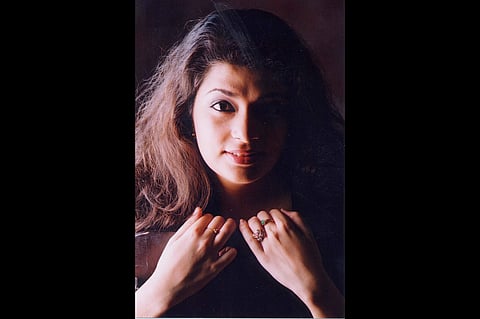
- LIFESTYLE
- FASHION
- FOOD
- ENTERTAINMENT
- EVENTS
- CULTURE
- VIDEOS
- WEB STORIES
- GALLERIES
- GADGETS
- CAR & BIKE
- SOCIETY
- TRAVEL
- NORTH EAST
- INDULGE CONNECT

Isheeta Ganguly was just three months old when her parents decided to move to The States. However, despite having grown up entirely abroad, frequent visits to her freedom fighter grandfather Shantimoy Ganguly in Kolkata, and her usual musical environment at home when abroad allowed her to stay connected to her roots. She took a sabbatical to India when she was just a young adolescent and went to release her first album on Tagore at the age of 14, under the tutelage of legendary Rabindra Sangeet vocalist Suchitra Mitra. Today she hasn’t only travelled the world bringing Tagore to the international platform, but has also extensively worked on fusion elements that can be introduced into traditional aspects of Tagore’s music. She is also currently active with her musical theatre production Three Women which fictionally brings together three significant women from Tagore’s life and works namely Kadambari- his sister in law, Charu from Charulata and Bimala from Gharey Baire. We speak to her to know more about her upcoming release Damaru Project, and her aspirations of spreading the vastness of Tagore’s works beyond shores.
How did you find your inclination towards Tagore’s works especially through musical theatre productions?
I was exposed to Suchitra Mitra’s music from a young age, and her interpretation of Tagore even while I was growing up abroad. This subconsciously shaped me in a lot of ways. As an adult, I went on to collaborate with the prestigious Battery Dance Company based out of NYC, where for the first time American Contemporary Ballet was fused with Tagore’s Music. I have also extensively worked on fusion projects such as an album called Damaru that brings together components of Jazz, Pop and RnB with Rabindra Sangeet. It was in 2013 that I opened for the coveted Kala Ghoda Festival with my band, following which I was given a directive by the Kala Ghoda committee to write something on Tagore’s women. This is when I wrote the script for my musical theatre production Three Women that brings together the ghost of Kadambari with Charu and Bimala through humour and drama. I have also written two other musical theatre productions namely Sundays with Chitra and Chaitali, and Shakuntala Awaits. While the first is based on the stories of Chitra from the epic Mahabharata, the second sees Shakunatala and Dushyant re-emerge as a modern era couple.
How is Tagore being received by the audiences beyond the Indian diaspora?
I have done an extensive US tour with my production Three Women, and it has received a tremendous response from all the states we have performed in. I think one of the primary reasons for this is the element of humour. The second reason according to me is being able to create a character that any woman can identify with. It helps people relate to the performances on stage even if they are not well versed with Tagore’s works. A human story is all that matters.
What are you working on currently?
Three Women is in the process to become a film, and the screenplay for the film has already been completed. The film’s narrative however will see a complex mother-daughter relationship in the modern era trying to be solved by a ghost who puts perspective into their struggles. I also have a Three Women show coming up at Mumbai’s National Centre for Performing Arts, and the songs of the play being released under the banner of Damaru Project on Apple Music and Spotify. I am also due to join the symposium being organised by Columbia University and Ruben Museum, New York City in the month of April where I will be joining a panel shedding light on the topic Navigating Art for Change.